Spectrum Summary: Indira Gandhi: the First Phase (January 1966–March 1977) | History for UPSC CSE PDF Download
Indira Gandhi
Background
- After the unexpected passing of Lal Bahadur Shastri in January 1966, Gulzarilal Nanda served as the temporary Prime Minister until new elections could be organized.
- In the subsequent leadership election for the Congress party , Indira Gandhi , the daughter of Jawaharlal Nehru , emerged victorious against Morarji Desai with the backing of the Syndicate and a majority of party members.
- There was a prevailing belief among some senior Congress members that Indira Gandhi would be easier to control, which contributed to her election as party leader.
Early Life
- Indira Priyadarshini was born on November 19, 1917 , in Allahabad to Jawaharlal Nehru and Kamala Nehru . Growing up during India’s fight for freedom, her family was deeply involved in the struggle, immersing her in the tumultuous events of her youth.
- As a child, she reportedly sacrificed an English-made doll on bonfires of foreign goods during the freedom movement. At 12, she led a group of children called the Vanar Sena , contributing by addressing envelopes, making flags, putting up notices, and delivering messages to freedom fighters.
- Indira attended various schools and colleges, for example, Ecole de Bex in Switzerland, Rabindranath Tagore’s Visva-Bharati , and Somerville College , Oxford .
- In 1936, she joined the Indian National Congress , and by 1938, she became a member of the Indian National Congress . It was during her time in England that she met Feroze Jehangir Gandhi . He was also a member of the Indian National Congress and studying in London. Feroze was a Parsi. Indira returned to India in 1941 with Feroze Gandhi, and she married him in 1942. Feroze too was a member of the Indian National Congress and took part in the freedom struggle. Indira was an active participant in the Quit India Movement and was imprisoned in Naini Central Jail for some time.
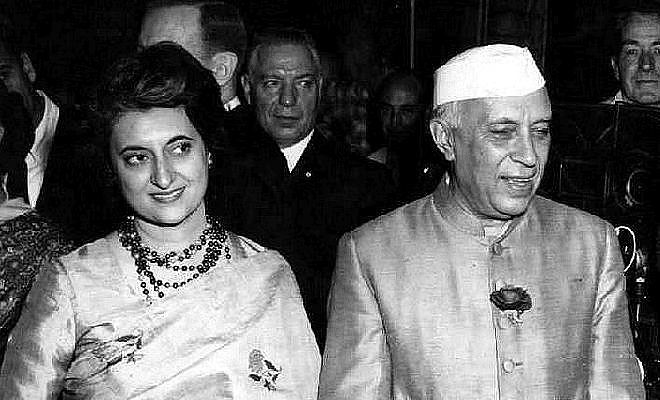
Political Journey after Independence
- Early Years and Family Involvement in Politics (Pre-Independence): After India gained independence, Jawaharlal Nehru became the prime minister, and Indira often acted as his hostess and accompanied him to events.
- Political Engagement and Personal Challenges: In the 1951-52 General Elections, Indira managed Feroze's campaign, which won a seat from Rae Bareilly. However, various personal differences ultimately led to their separation. Feroze later exposed a corruption scandal before he died in 1960.
- Rise in Congress Party : Indira joined the Congress Party's working committee in 1955, becoming its president in 1959. After Nehru died in 1964, she entered the Rajya Sabha and served as the information and broadcasting minister under Lal Bahadur Shastri.
Historic Moment: Indira Gandhi Becomes Prime Minister
On January 19, 1966, Indira Gandhi made history by becoming the first woman Prime Minister of India and the third Prime Minister overall.
- Challenges in the 1967 General Elections : The 1967 General Elections occurred during a time of economic difficulties, and although Indira won from Rae Bareilly, the Congress party faced a slim majority in the elections. Morarji Desai became the deputy prime minister and finance minister.
- Setbacks and Political Turmoil: The Congress party experienced losses in state assembly elections, leading to coalition governments and political defections, causing instability in the administration.
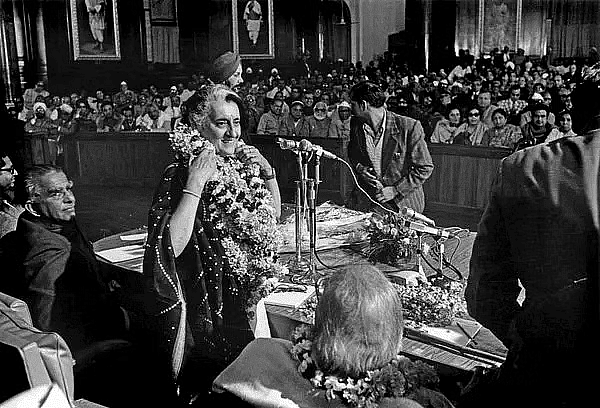
Congress Split and Minority Government at the Centre
- Different Views in Congress: Within the Congress party, there were disagreements between two groups. One group wanted to handle protests firmly, support private businesses, and strengthen relations with the US (right-wing). The other, led by Indira Gandhi , aimed for major economic changes, opposed by conservative members (left-wing).
- Plans for Change : Indira Gandhi, leading the Congress Working Committee, introduced a 10-point plan . This plan included controlling banks, increasing government involvement in foreign trade, taking over general insurance, setting limits on property ownership, providing food to the public, accelerating land reforms, and offering affordable housing to rural people. Her decision to take control of certain banks without consulting the finance minister led to his resignation.
- Controversial Presidential Election : After the president passed away in 1969, there was a disagreement in the Congress party regarding the next president. Neelam Sanjiva Reddy was the official candidate supported by one faction of the party. However, Indira Gandhi, who leaned towards socialist ideas, favoured V.V. Giri , who ultimately won the election.
- Expulsion and New Faction : In November 1969, Indira Gandhi faced expulsion from the Congress party due to internal conflicts and her unilateral actions, initiated by President S. Nijalingappa . Unfazed, she formed her own faction called Congress (R) with support from many party members.
- Losses in State Elections : The Congress party experienced defeats in several states during local elections. The new governments in these states were often unstable, and politicians frequently switched from one party to another.
Although Indira Gandhi lost her majority in the Lok Sabha, her government continued to operate with support from regional parties like the DMK and Akali Dal , as well as the communists.
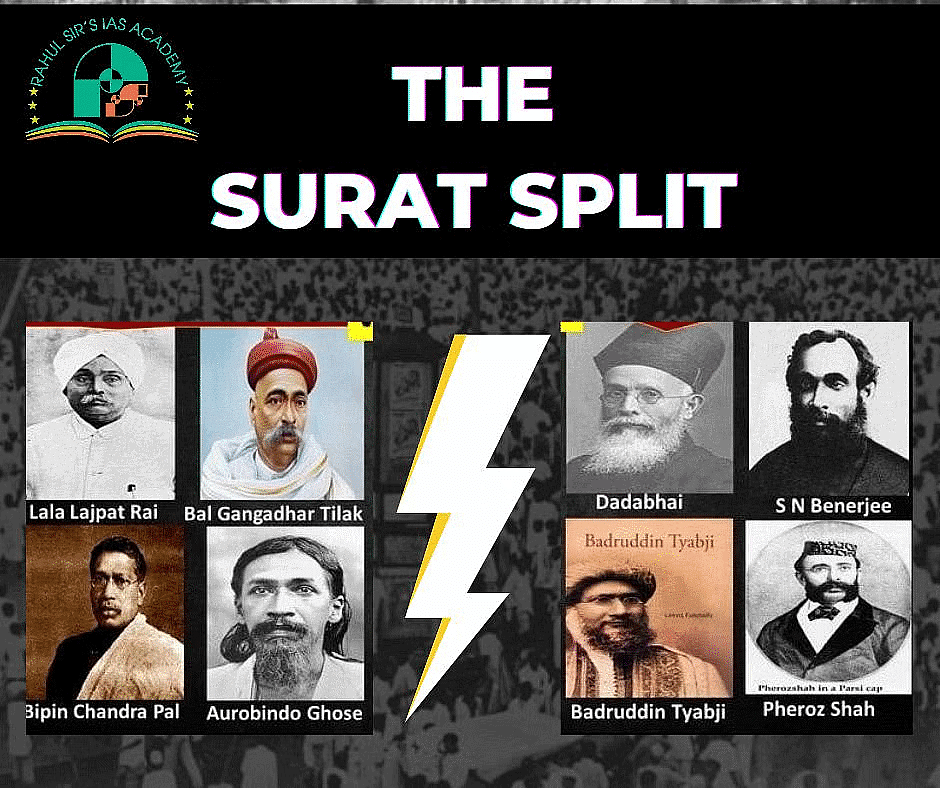
The 1971 Elections: Indira Triumphant
Key Challenges and Elections
- Challenges of Leading a Minority Government: Indira Gandhi faced difficulties in leading a minority government, dealing with specific issues in the Supreme Court and Parliament. To nationalise banks, she used a presidential order, addressing Supreme Court concerns. Efforts to abolish privy purses and derecognise princes encountered obstacles in both Parliament and the Supreme Court.
- Early General Elections in 1971: In December 1970, Indira Gandhi called for early general elections in 1971. The Congress (Reformed) party campaigned with the slogan ' Garibi Hatao ' (remove poverty), aiming for social change, reducing inequalities, and ensuring stable governance.
- Grand Alliance and Election Victory: Opposition parties, including Swatantra, Congress-O, and SSP, formed the Grand Alliance aiming to ' Indira Hatao ' (remove Indira). Despite this, Congress (Reformed) won the elections with a significant majority.
Impact of the 1971 War
- India's Success in the 1971 War: India's victory over Pakistan in December 1971, leading to the creation of Bangladesh, significantly boosted Indira Gandhi's image. In the state assembly elections of March 1972, Congress (Reformed) gained power in several states, notably diminishing the influence of Congress (O) and the Swatantra Party as major opponents.
- Impact of the Grand Alliance: The Grand Alliance, comprising non-Communist opposition parties united against Indira Gandhi, failed to prevent Congress (Reformed) from winning the elections.
- Significance of 1971 Victory: The success in the 1971 war with Pakistan and the subsequent formation of Bangladesh had a profoundly positive impact on Indira Gandhi's reputation.
- Success in State Elections: In the March 1972 state assembly elections, Congress (Reformed) achieved control in multiple states, significantly weakening the influence of Congress (O) and the Swatantra Party.
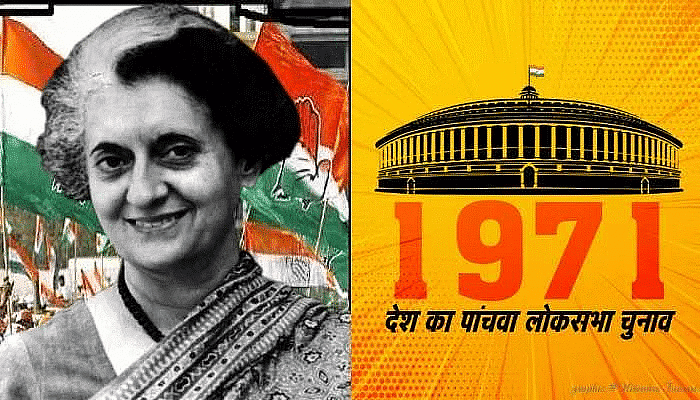
Challenges Faced by Indira Gandhi in 1973
Declining Popularity
- Indira Gandhi experienced a decline in popularity in 1973 despite some achievements by her government.
- The main issue was high inflation resulting from wartime costs, drought conditions, and the 1973 oil crisis triggered by the Yom Kippur War .
- Poor monsoons adversely affected agriculture and industry, while rising world crude prices made oil imports and petroleum products more expensive.
- This period also saw an increase in unemployment and widespread strikes, with the all-India railway strike in May 1974 being particularly notable.
Alienation of Social Classes
- Wealthy peasants were dissatisfied with land reforms.
- Industrialists opposed extensive nationalisation and socialist policies.
- The middle class criticized rising prices and growing corruption among officials and politicians.
Nepotism Controversy
- The perception of nepotism grew when Indira Gandhi's son, Sanjay Gandhi , received a licence and exclusive contract to produce a small fuel-efficient car.
JP Movement
Protests Against Rising Prices
- Protests emerged in Gujarat and Bihar against the soaring prices of essential goods.
- The Nav-Nirman Movement in Gujarat (December 1973 - March 1974) gained enough traction for the central government to dissolve the state assembly.
- In Bihar, student protests transformed into the JP Movement , spearheaded by Jayaprakash Narayan (JP) , with a focus on combating corruption .
JP’s Call for 'Total Revolution'
- JP advocated for a 'Total Revolution' aimed at comprehensive social and political transformation, demanding the resignation of the Congress government in Bihar.
- This led to widespread protests, including surrounding the legislature, refusing to pay taxes, and calls for national mobilisation against Indira Gandhi's government.
Support and Decline
- The movement garnered support in North India, with non-left opposition parties joining JP's cause.
- However, the momentum of the movement waned by the end of 1974.
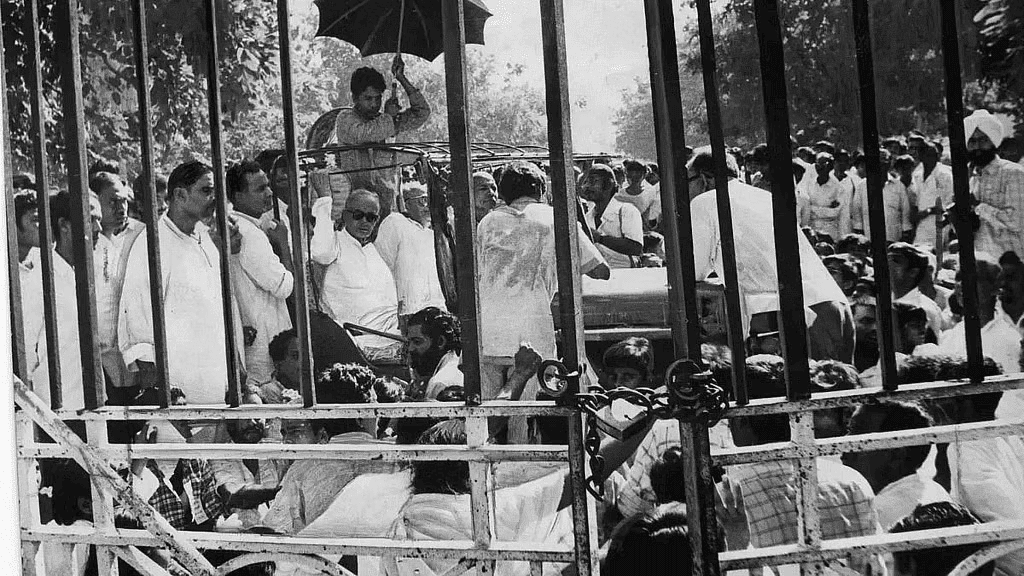
Challenge and Change in 1976
In 1976, Indira Gandhi challenged Jayaprakash Narayan (JP) to prove the strength of his group against the Congress party in the elections. JP accepted the challenge, but before the democratic contest could happen, significant events unfolded.
The Allahabad High Court Decision and the Imposition of Emergency
- The Court Verdict - June 12, 1975: Justice Sinha of the Allahabad High Court ruled on an election petition from Raj Narain against Indira Gandhi, claiming she engaged in corrupt practices during the 1971 election. The court found her 1971 election to the Lok Sabha invalid due to electoral misconduct, overspending, and misuse of government resources for political gain. This ruling meant she could no longer serve as prime minister and was barred from contesting elections for six years.
- Appeal and Political Developments: An appeal was made to the Supreme Court, but before it could be decided, significant political events occurred. The Congress party faced defeats in the Gujarat assembly elections and was unable to form a government. Simultaneously, the JP movement, demanding Indira Gandhi's resignation, gained momentum, leading to calls for a civil disobedience movement starting June 29.
- Declaration of State of Emergency - June 25–26, 1975: In response to escalating unrest and lawlessness, Indira Gandhi advised President Fakhruddin Ali Ahmed to declare a nationwide state of emergency. The president announced this emergency from June 25 to June 26, 1975, under Article 352(1) of the Constitution. Notably, the prime minister's decision was not initially approved by the cabinet, which consented after the fact.
This court ruling triggered further political instability, leading to the State of Emergency from 1975 to 1977.
Growth of Popular Discontent
- As time went on, various groups and individuals began to oppose the Emergency. Trade unions started to protest, and even within the Congress party , some members began to voice their discontent.
- Prominent leaders like Morarji Desai and Jagjivan Ram were among those who became critical of the government's actions.
- By the end of 1976, the discontent had grown significantly, with protests and demonstrations becoming more common. People from different walks of life, including students, workers, and political activists, joined in to express their opposition to the continued Emergency measures.
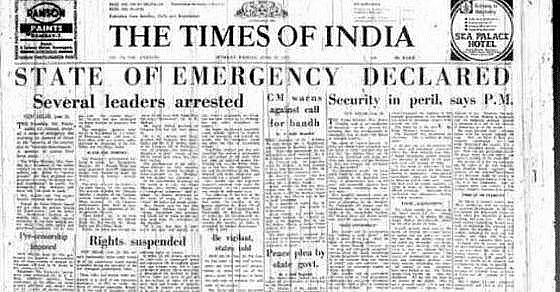
The Emergency and Its Aftermath
- By the middle of 1976, there was a growing dissatisfaction as economic improvements slowed down, criminal activities resumed, and welfare programs progressed at a sluggish pace.
- The Emergency period is regarded as one of the darkest times in post-independence India. It entrenched sycophancy in politics, paving the way for dynastic politics within the Indian National Congress. The 1976 AICC session in Guwahati marked the introduction of Sanjay Gandhi, setting the stage for this political shift.
Elections of 1977
The End of Emergency - 1977
- After being extended twice, Indira Gandhi unexpectedly called for elections.
- Some believe she sought public endorsement for the policies enacted during the Emergency, while others think her democratic instincts prompted her to lift the strict measures.
- The announcement came in January 1977, accompanied by the release of political prisoners and the lifting of press censorship.
Opposition Unity
Historic Election: Janata Party Victory
- In response, the Jana Sangh , Congress (O) , Bharatiya Lok Dal , and the Socialist Party formed the Janata Party .
- In February, Jagjivan Ram , Nandini Satpathy , and Hemvati Nandan Bahuguna left the Indian National Congress to establish the Congress for Democracy ( CFD ).
- The CFD , Akali Dal , DMK , and CPM joined forces with the Janata Party to compete in elections against the Congress and its allies, the CPI and AIADMK .
Election Campaign
- The Janata alliance emphasized the wrongdoings during the Emergency and the need for civil liberties in its campaign.
- The elections in March 1977 were essentially a referendum on the Emergency , resulting in a significant victory for the Janata alliance , which won 330 out of 542 seats in the Lok Sabha .
- The Congress , especially in the north, faced a major defeat, with both Indira Gandhi and Sanjay Gandhi losing their seats.
- The southern states, less affected by the Emergency , continued to support the Congress .
- The elections demonstrated that despite concerns about widespread illiteracy , democracy could recover in India.
- The results showed that even the poor and illiterate understood the importance of civil rights and exercised their political power wisely.
- The people of India ensured the strength of democracy in the country.
- The Emergency , which was declared on June 25, 1975, was officially lifted on March 21, 1977.
Developments in the Political System
Changing Trends in Elections
- Increasing Malpractices: In , practices like booth capturing and rigging became more frequent. The Election Commission noted an increase in casteism, especially in Bihar, which affected voting patterns across the country.
- Congress Changes: After their victory in the elections, the Congress, led by Indira Gandhi, rebranded as Congress (I) but later removed the 'I', claiming to be the 'real' Congress. The internal democracy within Congress continued to decline.
Growth of Regional Interests
- After the elections, the Congress lost control in several northern states, leading to the creation and eventual dissolution of the Samyukta Vidhayak Dal (SVD) . Regional interests gained importance, particularly in southern states like Tamil Nadu, which felt overshadowed by the north. This shift led to the rise of the Dravida Munnetra Kazhagam (DMK) in Tamil Nadu, highlighting a growing political awareness.
- Other Regional Developments: In West Bengal, the Congress lost power in , resulting in a coalition government formed by the Communist Party of India (Marxist) (CPM) and the Bangla Congress. In Maharashtra, the Shiv Sena emerged in , demanding 'Bombay for Maharashtrians.'
- In Andhra Pradesh, there was a renewed push for the creation of Telangana with Hyderabad as its capital. At the same time, the Naxalites began to establish a presence in rural areas.
- In , Indira Gandhi agreed to the Akalis' demand to reorganise Punjab based on language. This decision led to the formation of Haryana as a separate state for Hindi-speaking regions. However, the status of Chandigarh remained disputed, as it was declared a union territory shared by both states. Veteran freedom fighter Darshan Singh Pheruman undertook a fast unto death, but the initially temporary arrangement persisted indefinitely.
- Calls for Autonomy: Kashmir held an election in , reflecting underlying tensions. In , after the Indo-Pak war, Sheikh Abdullah agreed to forgo self-determination for Kashmir but sought greater autonomy. Similar demands for autonomy arose in other regions like Telangana in Andhra Pradesh.
- Border Areas and Separatist Movements: In Mizoram, the Mizo National Front (MNF) aimed for independence but accepted union territory status in . Nagaland faced separatist movements, which led to the imposition of president's rule in . Meghalaya, Manipur, and Tripura gained statehood in .
The Emergency imposed by Indira Gandhi in ended in March , paving the way for significant political changes in the upcoming elections.
Language Policy to Address Anti-Hindi Unrest
- Addressing Language Disturbances (1967) : The Act aimed to ensure equitable use of Hindi and regional languages. It was a response to unrest and was linked to the Official Languages Act of 1967.
- Centralization of Power and Socialist Approach : Indira Gandhi sought guidance from key administrators. Advisors like P.N. Haksar, T.N. Kaul, D.P. Dhar, and R.N. Kao significantly influenced her decisions. Haksar, a socialist, advocated for a stronger State role in the economy and emphasized the public sector's importance for social integration.
- Advisor Impact on Gandhi's Image : T.N. Kaul, D.P. Dhar, P.N. Dhar, and R.N. Kao, each with unique backgrounds, shaped Gandhi's image as pro-poor and supportive of socialism in economic matters and secularism in religious issues. Historian Ramachandra Guha highlighted the advisors' role in crafting Gandhi's public persona.
The Forty-Second Amendment Act: A 'Mini Constitution' of Sorts
- In 1976, a significant event in Indian legislative history took place with the Forty-Second Constitutional Amendment Act , often referred to as a 'mini constitution' due to its extensive modifications. This amendment added around 40 articles and introduced a new chapter to the Constitution, indicating a substantial overhaul.
- The changes to the Preamble were particularly noteworthy. India was redefined as a 'sovereign, socialist, secular, democratic republic,' and the phrase 'unity of the nation' was replaced with 'unity and integrity of the nation.'
- Several key alterations and additions were made. Amendments were placed beyond the reach of courts, granting Parliament unrestricted power to amend the Constitution. The authority of high courts and the Supreme Court in judicial review and writ jurisdiction faced limitations. New directive principles were added, taking precedence over fundamental rights, and a new chapter outlining fundamental duties was introduced.
- Moreover, the term of the Lok Sabha was extended from five to six years, and the number of seats in constituencies for Lok Sabha and state legislative assemblies was frozen at the 1971 census level until the first census after 2000.
- To address issues related to anti-national activities, laws enacted by Parliament were given precedence over fundamental rights. The quorum requirement in both Parliament and state legislatures, although temporarily altered during emergencies, still existed.
- The amendment also addressed national emergency and state powers. A national emergency could now be proclaimed for specific parts of India's territory. The duration of president's rule without Parliament's approval was extended from six months to one year. The Centre was also granted the authority to deploy armed forces in a state during serious law and order situations. These changes resulted in a more unitary structure of the State.
Socio-Economic Policies
Nationalization of Various Sectors of the Economy
P.N. Haksar advised Indira Gandhi to strengthen her control of the party by opposing the Syndicate on ideological grounds. Following this advice, she promoted a socialistic path for the country's benefit, leading to various measures aligned with this ideology.
Key Measures Implemented
- Indira Gandhi collaborated with the Young Turks , including Chandra Shekhar, to nationalize private banks.
- Morarji Desai, who opposed this idea, was removed from the finance portfolio.
- In July 1969, 14 banks were nationalized through a presidential ordinance, later confirmed by Parliament as the Banking Companies (Acquisition and Transfer of Undertakings) Act .
- She explained on the radio that India, as a young democracy, needed to protect against the control of a few individuals over social, economic, or political structures.
- The aim of public ownership of banks was to ensure financial accessibility for farmers and small industries.
- Private banks had previously failed, causing issues for depositors without guarantees.
- Nationalization had positive effects, such as:
- Expansion of the banking sector in rural areas.
- Increase in deposits and growth in investment in the informal sector.
- Improved credit availability for farmers and small industries.
- In 1972, a differential interest rates scheme was launched to provide credit to weaker sections at lower interest rates.
- After her re-election in 1971, she nationalized coal, steel, copper, refining, cotton textiles, and insurance industries.
- In 1973, following disruptions by foreign-owned oil companies during the 1971 war, she nationalized the oil companies.
- Since then, major oil companies have been required to maintain a minimum stock of oil for military use when necessary.
Abolition of Princely Privileges
- After India achieved independence, the rulers of princely states were granted a 'privy purse' as compensation when they agreed to join the Union of India. This annual payment varied significantly, ranging from Rs 5,000 to Rs 26 lakh , depending on factors such as the state’s revenue, the ruler's salute state status, and the dynasty's age.
- The privy purse was regulated by Article 291 of the Indian Constitution, ensuring a fixed and tax-free payment to former princely rulers and their descendants.
- Over time, there was growing criticism of these privileges, with many arguing that they were archaic and no longer appropriate.
- An initial attempt to abolish the privy purse in 1969 did not succeed. However, the Twenty-sixth Amendment in 1971 successfully abolished it.
- This amendment was rooted in the belief that the concept of rulers receiving privy purses and enjoying special privileges was incompatible with contemporary governance and social equity.
- The Twenty-sixth Amendment introduced Article 363-A to the Constitution, which explicitly terminated the recognition of such rulers and the provision of their privy purses .
- The decision to abolish the privy purse was not only principled but also aimed at alleviating the government’s revenue deficit.
- During the period of social transformation under Prime Minister Indira Gandhi, several important social legislations were enacted.
- Indira Gandhi, known for her association with socialist principles, clarified that her use of the term "socialist" was intended to address the issue of poverty.
- The abolition of privy purses was part of the effort to eradicate remnants of aristocracy in India following independence.
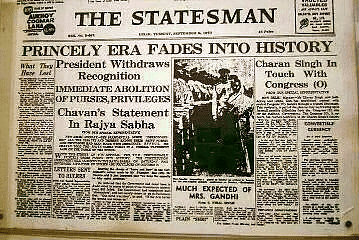
MRTP Act
The Monopolies and Restrictive Trade Practices (MRTP) Act was passed in 1969 by the government led by Indira Gandhi. This was after the removal of the managing agency system, which had allowed a small group of capitalists to control numerous industrial enterprises with only a minor financial stake in them.
The MRTP Act aimed to address the concentration of economic power among a few influential business families. It sought to prevent these families from having excessive control over multiple industries, promoting a fairer distribution of economic power.
Steps for Equity and Poverty Reduction
- The government abolished privy purses , leading to a fairer distribution of resources.
- Banks were instructed to focus on lending to sectors that supported social equity .
- The Indian Constitution included a clause supporting equal pay for equal work , promoting gender equality.
- Land ceiling laws were quickly enforced, addressing both agricultural and urban land ownership. Some states enacted laws to redistribute land to marginal farmers.
- Efforts included distributing food grains at affordable prices to vulnerable groups, initiating a rural employment programme, constructing houses for landless labourers, abolishing bonded labour, and imposing a moratorium on debts owed by the poor.
- As a result of these social changes, middle-ranking farmers from lower castes became more prominent and started to challenge the political system in Northern India.
Tackling Economic Problems
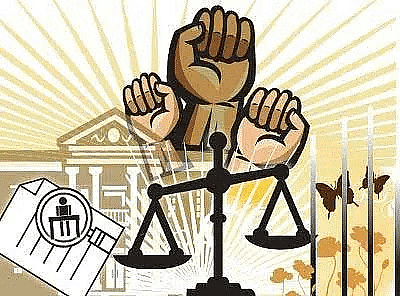
Economic Challenges in India
- In the mid-1960s, India faced a severe economic crisis marked by shortages of food grains and a large fiscal deficit.
- The balance of payments situation deteriorated, leading to increased reliance on foreign aid.
- The conflict with Pakistan in 1965 resulted in the cessation of food aid from the United States, as the PL-480 agreement was not renewed.
- In response to these economic difficulties, India shifted from traditional five-year plans to annual plans between 1966 and 1969.
- Despite these adjustments, inflation remained high, with only temporary relief during the Emergency period from 1975 to 1977.
- Unemployment emerged as a significant issue during this period, exacerbating the economic challenges faced by the country.
Devaluation of the Rupee
- In the mid-1960s, India faced pressure from the US, World Bank, and IMF to relax controls over trade and industry, as well as to devalue the rupee.
- In June 1966, under the leadership of Indira Gandhi , the rupee was devalued by 36.5% , increasing the dollar's value against it by 57.4% .
- The aim was to boost India's exports and acquire dollars to fund imports of food, oil, and capital goods.
- This decision faced significant opposition from various sectors, and the anticipated foreign aid and capital did not materialise as quickly as expected.
- Despite the initial challenges, the devaluation had a positive medium-term impact, helping India avoid famine and bankruptcy.
- While the trade deficit improved in some areas by 1970-71, other economic indicators showed mixed results, preventing a debt crisis.
- Initially, devaluation led to inflation and was less effective due to inconsistent export-import policies.
- The idea of liberalising the economy was abandoned, and measures to control the deficit included reducing government spending, which resulted in an industrial slowdown.
- The Foreign Exchange Regulation Act (FERA) was enacted, imposing restrictions on foreign investment and the activities of foreign companies in India.
- Instead of shutting down, struggling companies were taken over by the government.
- These measures provided short-term benefits, averting a debt crisis and increasing foreign exchange and food grain purchases.
- However, in the long run, some of these actions contributed to economic vulnerabilities, leading to stagnation and slow growth in India.
Fifth Five-Year Plan
The Fifth Five-Year Plan in India was focused on "Removal of Poverty" and "Attainment of Self-Reliance." The key objectives included:
- Growth with social justice : The plan aimed to achieve economic growth while ensuring social justice and equity.
- Poverty alleviation : A major focus was on reducing poverty through various programs and initiatives.
- Self-reliance : The plan emphasized achieving self-reliance in various sectors, including food and energy.
- Infrastructure development : The plan also aimed at improving infrastructure to support economic growth.
- Employment generation : Creating job opportunities was a key priority to address unemployment and underemployment.
The Indo-Pak War of 1971 and the Birth of Bangladesh
Fifth Five-Year Plan (1974-79)
- Did not complete its full term, mostly coinciding with the Emergency period in India.
- Closely linked to the Twenty-Point Programme , with economic measures being forcefully implemented during the Emergency.
- Although scheduled to end in 1979, the plan was effectively curtailed in 1977 due to political changes.
- Achieved over 5% growth in per capita income during its tenure.
The 1970 Polls in Pakistan and Unrest in East Pakistan:
- General Yahya Khan's promise to restore democracy led to the first general elections in 1970, revealing a political divide.
- The Pakistan People’s Party (PPP) dominated the west, while the Awami League secured a majority in the east.
- Zulfikar Bhutto's support for postponing the National Assembly triggered unrest in East Pakistan, where the Awami League called for a general strike.
Refugee Influx in India:
- The violent military crackdown in East Pakistan prompted a massive refugee influx into India, raising humanitarian concerns.
- The Awami League's general strike exacerbated the crisis, highlighting the urgent need for assistance.
War and Liberation of East Pakistan:
- India intervened in 1971 in response to the Pakistani military's violent crackdown in East Pakistan.
- The conflict resulted in the liberation of East Pakistan and the establishment of Bangladesh as an independent nation.
- The war was marked by significant humanitarian challenges, including civilian casualties and displacement.
The Simla Agreement:
- Aimed at fostering peace between India and Pakistan, the Simla Agreement sought to address and resolve outstanding issues between the two nations.
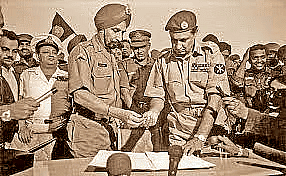
Post-War Simla Agreement
- The Simla Agreement was signed in 1972 between India and Pakistan after the war.
- Its purpose was to normalise relations and resolve conflicts in a peaceful manner.
- The agreement included principles for the return of prisoners of war .
- It aimed to establish a new balance in the region following the events of Bangladesh's creation in 1971 .
- The Simla Agreement played a significant role in shaping the post-war relations between India and Pakistan .
Key Points of the Simla Agreement
- It focused on peaceful conflict resolution.
- It set guidelines for how to handle prisoners of war.
- It was a response to the changes in the region after Bangladesh became independent.
- It helped to create a framework for future interactions between the two countries.
|
216 videos|855 docs|219 tests
|
FAQs on Spectrum Summary: Indira Gandhi: the First Phase (January 1966–March 1977) - History for UPSC CSE
| 1. What were the socio-economic policies implemented by Indira Gandhi during her political journey? |  |
| 2. How did Indira Gandhi's language policy tackle anti-Hindi disturbances? |  |
| 3. What led to the Indo-Pak War of 1971 and the birth of Bangladesh? |  |
| 4. How did the 1971 elections solidify Indira Gandhi's position in Indian politics? |  |
| 5. What were some of the key developments in the political system during Indira Gandhi's first phase as Prime Minister? |  |
















